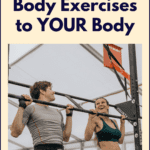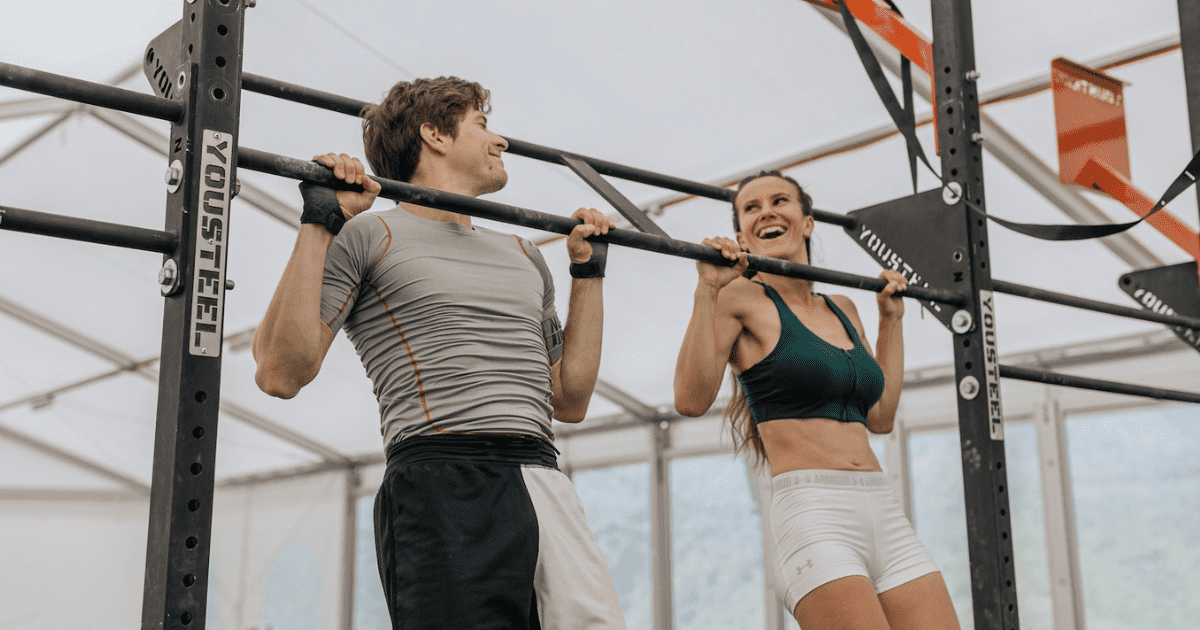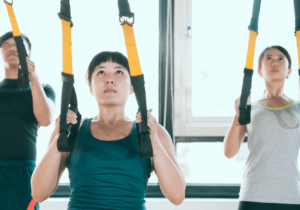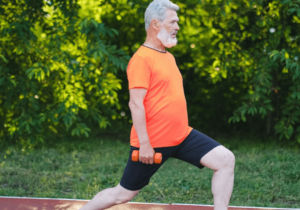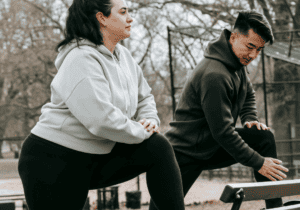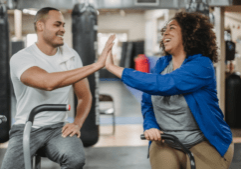21 Upper Body Exercises Plus Modifications to fit YOUR Body
Fitness is for Everyone: Accessible Fitness Part 3 - Upper Body
Part two of this series addressed specific modifications of lower body exercises; this article is all about making upper body exercises that will work for you!
Adjust upper body exercises to fit YOUR body
Our upper bodies (loosely defined as the chest, back, shoulders, and arms) have a lot going on!
When we train different parts of our upper bodies, we want to make sure we’re doing it in a way that strengthens instead of injures. Most upper body exercises essentially boil down to two motions: a pull or a push, both of which could be horizontal, vertical, or somewhere in between.
There’s a lot of variety in upper body movements, so it’s up to you to take the variations listed below and apply them to the many movements you might come across in your program! If you ever get stuck, comment below and we’ll help you out!
Your program might cover how to do these movements with good form. You can find all sorts of resources online to ensure you're performing a movement correctly (or hire a personal trainer!), but this article is focusing specifically on how to take that exercise and alter it for differing abilities.
Upper Body Exercises - Variations and Modifications
For All Upper Body Movements
Only do the Movements
If using a weight causes discomfort and you can’t find a suitable alternative movement, try doing it without any weight. Especially if the movement is new to you, doing it without weight can still have an effect on your muscles. Once that feels good, progress with light objects around the house before shifting back to weights.
Range of Motion
Many upper body exercises involve the shoulders, which can be a source of discomfort for many people. Keep the range of motion of the movement (see more in pt. 1) to what feels comfortable for you.
Try Resistance Bands
Instead of using weights like a kettlebell or dumbbells for a movement, you can also try using resistance bands. They can give you more control over range of motion and an easier way to change the tension (farther away for more, closer for less).
Pull Ups/Chin Ups
Variations using a Pull-up Bar
- Band-Assisted Pull Up
- Using a resistance band looped around a pull up bar and your feet can give you extra assistance in a pull up.
- Pull Up Negative
- Use a stool to start at the top of a pull up and lower yourself as slowly as possible. If it feels uncontrolled or takes a toll on your shoulders, I recommend trying another pull up variation first.
- Scapula Pull Up
- This pull up uses back muscles and not arms. Think about pulling your shoulder blades down, which will raise your body slightly.
- Active Hanging
- An active hang involves hanging from the bar for either as long as you can or a certain amount of time. Act like you’re about to start a pull up: shoulders engaged (down and back).
Variations without a pull up bar:
- Counter Pull Up
- If you have a table or counter that’s high enough and heavy enough, you can hang off of it with your legs out in front of you. Or, if you have access to a barbell rack, you can hang from that instead.
- Lat Pulldown
- With a machine or resistance band attached above you, use to pull down towards your body.
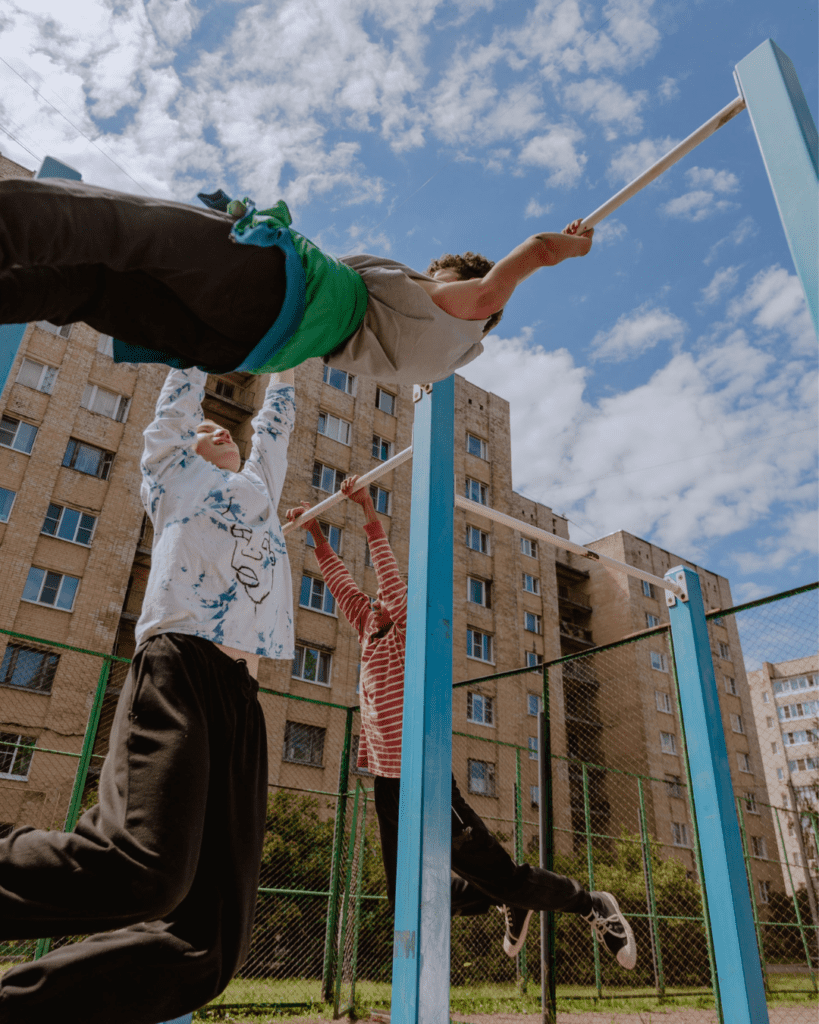
- Towel Slide Pull
- Lay on the ground on your stomach (if you have a hard surface like linoleum, wood, or tile, lay on something that slides like a towel; if you have carpet, lay on a hard surface that will slide). Reach your arms out ahead of you and pull yourself forward. If you have space, you can continue to pull forward, or you can push yourself back and start over again.
Push ups
- Incline Push Up
- Use a surface that’s higher than the ground to push off of, like a wall, counter, table, stool, chair, or stairs.
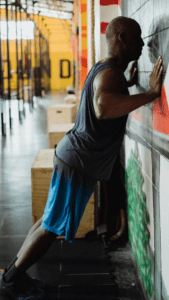
- Bear Crawl
- Bear crawls, or any kind of crawling, can help stabilize the shoulders and core by strengthening the muscles you need to hold yourself up.
- Plank
- Since a push up is essentially a moving plank, try taking out the movement and just holding a plank. You can find more plank ideas here
Overhead / Military Presses
Especially when going overhead, it’s important to only go through the range of motion you have and not try to force it. Continuing to do these movements and working on shoulder mobility over time can make it more accessible to you.
- Incline Press
- Instead of 100% overhead, an incline press sits you at an angle, which can be easier on the shoulders.
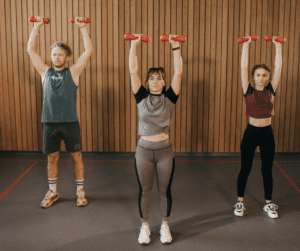
Other movements that don’t necessarily go overhead are Chest, Floor, and Bench Presses and different types of Rows, which will strengthen pressing muscles and give added stability for overhead pressing.
Rows / Bent Over Rows
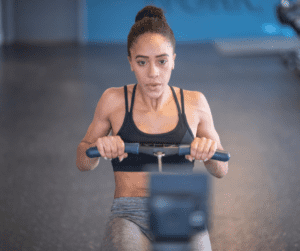
- Supported Row
- By rowing with one hand and supporting yourself with the other, you take more pressure off of your lower back than a bent over row. This can happen at any height- chair, countertop, wall, etc.
- Banded Row
- Either loop a resistance band around your feet or a sturdy object in front of you and pull (or use a rowing machine if you have access).
- IYTW
- This can be an adaptation of a couple different exercises, including rows and reverse flys. Each “letter” targets a slightly different part of your back. It can be done laying down, with your torso braced up against a chair, or standing in a slightly bent over position using light or no weights.
If you have questions about any of these variations on upper body exercises, ask below! In part 4 of this series, I’ll be talking about more variations you can use for all movements.
Sarah Siertle, a strength and movement coach, specializes in introducing people to strength training and works to make the fitness world a more inclusive place. She has been a movement instructor since 2012 and also teaches swing dance around the US. Find other articles written by Sarah on her coach profile. Let Sarah help you get STRONG so you can take advantage of life’s adventures!

